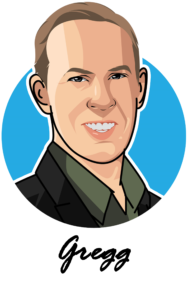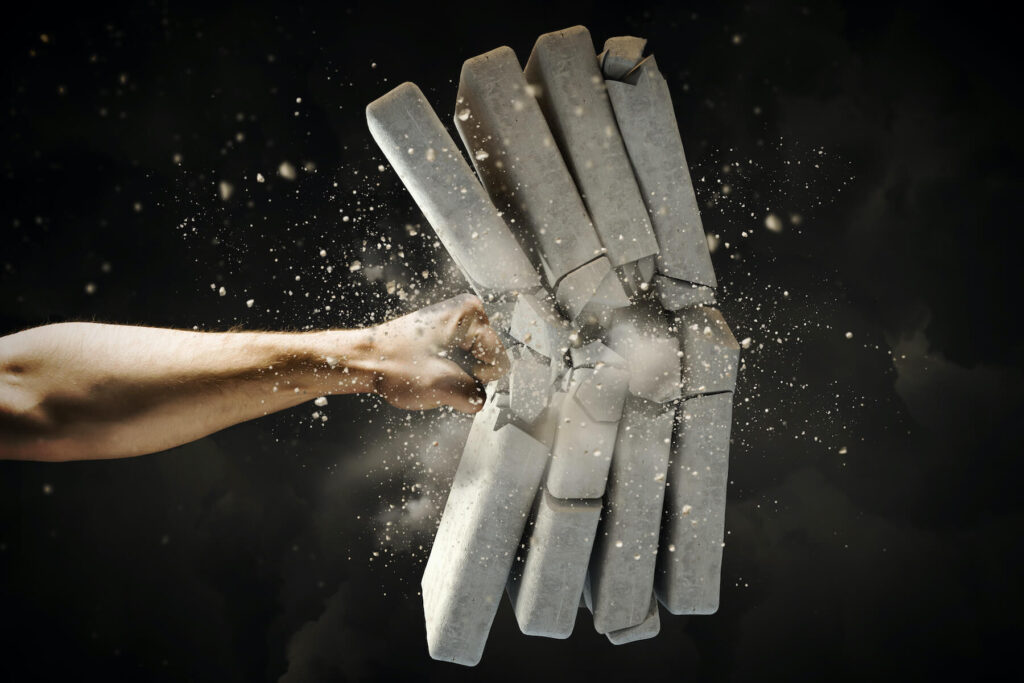Article Summary:
Many people feel overwhelmed by the busyness of life and suspect they could be serving others much more. This blog offers a quick way to evaluate how much you’re serving in your daily life, along with practical ways to serve more.
+++
Every day, you see challenges all around you—not just in the headlines but among your own family, friends, and colleagues. Relationship and health challenges. Stress, loneliness, and loss. Beyond that, you see larger challenges like poverty, crime, and school shootings. It’s easy to feel overwhelmed or too busy to help.
But you’re wise to pause and ask:
Are you weaving service into your daily life—in your relationships, at work, in your community?
When you do, you can make a difference while enriching your own sense of purpose and wellbeing.
Serving People at Home
There are many ways to serve the people closest to you: your family, friends, neighbors, and classmates. It can be through small acts of kindness and caring. Or by guiding, teaching, coaching, or mentoring others.
You can serve by offering emotional support—being a good listener, an encourager, or a rock for someone in pain. Or welcoming new neighbors, hosting them for a meal, and including them in local activities. Ask yourself:
- In what ways am I showing up for the people around me?
- Do I consistently show kindness to those around me—my family, friends, and neighbors?
- Am I taking opportunities to mentor, guide, teach, or support others when I can?
- Do people see me as a good listener and a source of encouragement?
1: Needs Work
2: Doing Fine
3: Thriving
Serving People at Work
Service shouldn’t stop at home. At work, you can serve your colleagues, customers, partners, and/or vendors in many ways. Sometimes it’s through acts of kindness—a friendly check-in or a word of thanks. Other times it’s by coaching or mentoring, whether formally through a program or informally over coffee. By actively sharing knowledge, offering help, and removing roadblocks, you can support your team members’ success and contribute to a healthier organizational culture.
Service at work also involves emotional support: listening well, cheering people on, or helping those who are stressed or struggling. It can be welcoming new colleagues, making sure they feel included in meetings and social events. And it can involve using your creative talents to uplift others—or offering pro bono professional services to people or causes that need them. Ask yourself:
- To what extent am I showing kindness in my interactions at work?
- Do I look for ways to guide, mentor, coach, or support others?
- Am I actively supporting my teammates’ success, not just my own?
- Do I provide encouragement and emotional support to colleagues who need it?
- How do I welcome and include new people on the team?
- What am I doing to contribute to a positive workplace culture?
1: Needs Work
2: Doing Fine
3: Thriving
Serving People You Come Across in Your Everyday Life
Opportunities to serve also arise every day in small, ordinary interactions with strangers. Think of the people you meet on the street, at the coffee shop, in stores, or at restaurants. Contributing here can be through simple gestures: holding a door open, smiling, thanking, being patient when things take longer than expected, or showing support to someone who’s having a bad day. Ask yourself:
- How do I treat the people I meet in passing—cashiers, baristas, delivery drivers, and others?
- Am I consistent in showing politeness, patience, and gratitude even when I’m rushed or stressed?
- Do I look for small ways to make someone’s day better, like a smile or a kind word?
1: Needs Work
2: Doing Fine
3: Thriving
Contributing to Places
Another way to serve is by contributing to the places and institutions that shape your life—schools, neighborhoods, faith communities, or your nation. You might donate resources or volunteer for a project. Or follow local and national issues and vote.
You can attend school board meetings, town halls, or online forums where decisions are made. Ask yourself:
- How well am I supporting the institutions and communities that matter to me?
- Do I regularly give time, talent, or resources to places that align with my values?
- Am I engaged in civic life—voting, attending meetings, or participating in discussions that shape my community?
1: Needs Work
2: Doing Fine
3: Thriving
Contributing to Causes or Issues
You can also make a difference by contributing to larger issues or causes that matter to you—such as healthcare, poverty, mental health, or the environment. You might donate to organizations addressing these challenges. Or volunteer at their events.
You can also use your voice and influence. This might include speaking up for people or causes that need support, raising awareness among your friends, or calling for change through letters or petitions. Ask yourself:
- Am I giving my time, resources, or talents to organizations working on the issues that matter most to me?
- How well am I using my voice to speak up for people or causes that need support?
- Am I helping to raise awareness or call for change in ways that are respectful, constructive, and effective?
1: Needs Work
2: Doing Fine
3: Thriving
Pro Tip: Build Your Service around These Three Things
One of the most fulfilling ways to serve is to align your contributions with what you’re naturally good at, what excites you, and what you care about. When you build your service around your strengths, passions, and values, it feels less like an obligation and more like an expression of who you are. You bring more energy, skill, and authenticity to what you’re doing—and the people you serve feel that.
Start by reflecting on your apex abilities. Are you a great listener, an organizer, a creative thinker, a connector? Someone who brings calm in a crisis? Think about the activities or causes that light you up. And then consider your core values: what matters most to you, the beliefs and principles you aspire to stand for. Ask yourself:
- Which of my strengths can I use to serve others more effectively?
- What causes or activities energize me?
- How do my values inform who I want to serve or the way I want to contribute?
- Where do my strengths, passions, and values overlap with real needs in my community or the world?
1: Needs Work
2: Doing Fine
3: Thriving
“Pervasive Service”
At its best, service isn’t something you do occasionally. It’s a defining feature of your life. In our book, LIFE Entrepreneurs, we called this “pervasive service.” When you embrace service as a guiding principle, it shapes your relationships, work, and daily actions. It becomes a lens through which you view opportunities, a habit that directs your choices, and a rhythm that carries you through life. Service, in this sense, isn’t a box to check or a compartmentalized activity. It’s woven into the fabric of your life.
Pervasive service means approaching each day with intentionality and being ready to grasp opportunities to make a difference. By making service a central tenet of your life, you can live more purposefully and joyfully—and watch as these daily actions add up to something extraordinary over time.
1: Needs Work
2: Doing Fine
3: Thriving
Conclusion: Commit to Serving More
Serving others isn’t just a lofty ideal. It’s something you can do every day, and it’s a gateway to a richer, more meaningful life.
Look at the different ways you’re already serving and consider where you might do more. Seek opportunities in your daily life, at work, in your community, and even in small everyday interactions. Remember, service doesn’t have to be grand to matter. Small, consistent acts of service ripple outward.
Anchor your service in your strengths, passions, and values. When your service aligns with who you are and what you care about most, it becomes more sustainable, impactful, and joyful.
The world needs people who not only care but act on their convictions. People who live and lead with heart. Here’s to serving more.
–Gregg
Tools for You
- Quality of Life Assessment so you can discover your strongest areas and the areas that need work, then act accordingly.
- Crafting Your Life & Work online course to help you design your next chapter and create a life you love.
- Traps Test (Common Traps of Living) to help you identify what’s getting in the way of your happiness and quality of life.
Related Articles & Books
- “The Importance of Service in Living a Good Life”
- “Bucket Filler or Bucket Dipper?”
- “Taking Stock of Your Quality of Life”
- “How to Become a Better Servant Leader”
- “Are You Focused Too Much on Yourself?”
- “Are You Trapped by Success?”
- “Are We More Materialistic than We’d Like to Admit?”
- “Are You Focusing Too Much on Others’ Needs?”
- Servant Leadership Series
- Tom Rath, Life’s Great Question: Discover How You Contribute to the World
- Billy Shore, The Cathedral Within: Transforming Your Life by Giving Something Back
- Adam Grant, Give and Take: Why Helping Others Drives Our Success
- Stephen Trzeciak and Anthony Mazzarelli, Wonder Drug: 7 Scientifically Proven Ways that Serving Others Is the Best Medicine for Yourself
Postscript: Inspirations on Service
- “I don’t think there’s anything as wonderful in life as being able to help someone else.” -Betty Ford
- “The best way to find yourself is to lose yourself in the service of others.” -Mahatma Gandhi
- “When you feel sad, serve.” -unknown
- “…if you’re hurting, you need to help somebody ease their hurt. If you’re in pain, help somebody else’s pain. And when you’re in a mess, you get yourself out of the mess helping somebody out of theirs. And in the process, you get to become a member of what I call the greatest fellowship of all, the sorority of compassion and the fraternity of service.” -Oprah Winfrey
- “There are occasions and opportunities for service that will vary throughout anyone’s life. The initial gate is that you understand that that’s a piece of being a full person. It’s a matter of saying yes to the opportunity when it appropriately appears. Every day is a preparation for serving something.” -Buie Seawell, attorney and professor
- “Life’s most urgent question is, ‘What are you doing for others?’” -Martin Luther King, Jr.
- “It is high time the ideal of success should be replaced with the ideal of service.” -Albert Einstein
- “Service is the very purpose of life. It is the rent we pay for living on the planet.” -Marian Wright Edelman, activist
- “…the only ones among you who will be really happy are those who have sought and found how to serve.” -Albert Schweitzer
- “…when you choose the paradigm of service, looking at life through that paradigm, it turns everything you do from a job into a gift.” -Oprah Winfrey
“Not everybody can be famous. But everybody can be great, because greatness is determined by service. You don’t have to have a college degree to serve. You don’t have to make your subject and verb agree to serve. You don’t have to know about Plato or Aristotle to serve. You don’t have to know Einstein’s theory of relativity to serve. You don’t have to know the second theory of thermodynamics in physics to serve. You only need a heart full of grace and a soul generated by love.” -Martin Luther King, Jr.
+++++++++++++++++
Gregg Vanourek is a writer, teacher, and TEDx speaker on personal development and leadership. He is co-author of three books, including LIFE Entrepreneurs: Ordinary People Creating Extraordinary Lives (a manifesto for living with purpose and passion) and Triple Crown Leadership: Building Excellent, Ethical, and Enduring Organizations (a winner of the International Book Awards). Check out his Crafting Your Life & Work online course or get his monthly newsletter. If you found value in this article, please forward it to a friend. Every little bit helps!































